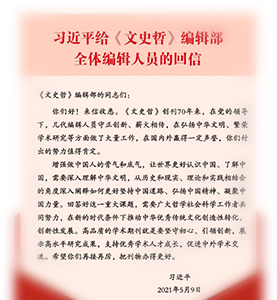论史前及夏时期的朱砂葬——兼论帝尧与丹朱传说
方 辉
我国史前先民对于朱砂的使用可追溯至距今6500年左右的仰韶时代早期,大约从距今6000年的仰韶时代中期开始,朱砂以人骨涂朱、随葬品涂朱和撒入墓圹填土等方式被使用在贵族丧葬仪式中。以朱砂铺设墓底作为贵族葬仪中不可或缺的程序是在龙山时代的陶寺文化中确立的,并为此后的二里头文化或夏时期文化所继承,成为商周墓葬制度的重要组成部分。陶寺文化族属为陶唐氏帝尧集团,文献传说中帝尧与丹朱既是父子、又充满矛盾乃至战争的奇特关系,反映了陶寺文化创造者与盛产朱砂的长江中游以及江汉地区史前先民既联合又斗争的史实。对于中原地区而言,朱砂因其资源的稀有,以及为了获得此种原料所付出的代价,成为陶寺及二里头社会精英所着意控制的对象。在早期国家王朝社会内部,祭司阶层通过宣扬朱砂在葬仪中的重要性,并通过对这一战略资源的垄断及再分配提高了自身的社会威望。祭司及统治者通过在葬仪中不断增加新的内容而增强仪式的复杂性及专业性,从而有利于维系政权的延续与社会的稳定。
A Study of Cinnabar Burials of Prehistory and Xia Period: with the Discussion of the Legends of Sage Emperor Yao and Danzhu
Fang Hui
The earliest remains of cinnabar using could be traced back to early Yangshao Time, c. 6,500 BP in China prehistory. Science the beginning of middle Yangshao Time, c. 6,000 BP, cinnabar were used in elites burials with spraying on the body, grave goods spray, and filled soil in funeral ceremony. It was in the Taosi Culture (c. 4,600-4,000 BP) of Longshan Time that the ceremony procedure of putting cinnabar under body or coffin was established, and inherited by the following Erlitou Culture or Xia culture, which became a key issue of funeral system in Shang and Zhou Dynasties. The author agrees with the point of Taotangshi group of Sage Emperor Yao being main former of the Taosi Culture, and makes a point that the peculiar relationship between Yao and Danzhu (cinnabar), father and son in one side but fighting each other in another side in legend, reflected a fact that Taosi Culture creator had close relationship with prehistory people in the Jianghan Region of Middle Yangtze River valley, where rich cinnabar were produced. Cinnabar was rare resource in North China and became prestige goods controlled by elites of Longshan, Erlitou, Shang and Zhou periods. During early state period, priest class through propagating significance of cinnabar in funeral ceremony in one side, and tried hard to monopolize the resource in another side, to increase their social status therefore.


